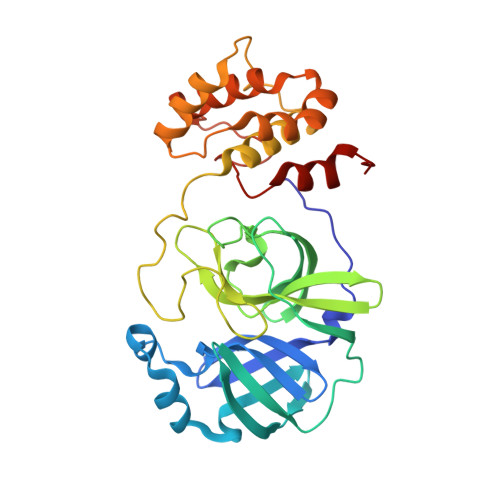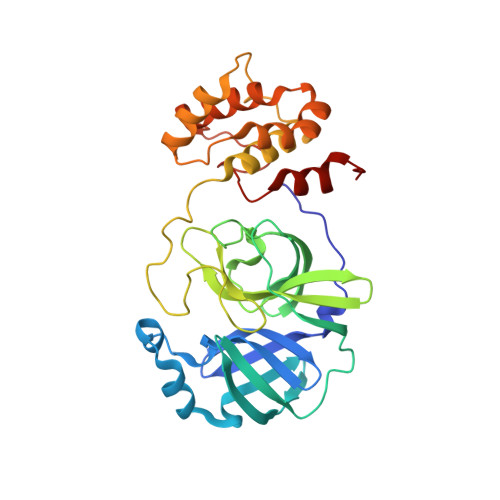Mechanism for controlling the dimer-monomer switch and coupling dimerization to catalysis of the severe acute respiratory syndrome coronavirus 3C-like protease.
Shi, J., Sivaraman, J., Song, J.(2008) J Virol 82: 4620-4629
- PubMed: 18305031
- DOI: https://doi.org/10.1128/JVI.02680-07
- Primary Citation of Related Structures:
2QCY - PubMed Abstract:
Unlike 3C protease, the severe acute respiratory syndrome coronavirus (SARS-CoV) 3C-like protease (3CLpro) is only enzymatically active as a homodimer and its catalysis is under extensive regulation by the unique extra domain. Despite intense studies, two puzzles still remain: (i) how the dimer-monomer switch is controlled and (ii) why dimerization is absolutely required for catalysis. Here we report the monomeric crystal structure of the SARS-CoV 3CLpro mutant R298A at a resolution of 1.75 A. Detailed analysis reveals that Arg298 serves as a key component for maintaining dimerization, and consequently, its mutation will trigger a cooperative switch from a dimer to a monomer. The monomeric enzyme is irreversibly inactivated because its catalytic machinery is frozen in the collapsed state, characteristic of the formation of a short 3(10)-helix from an active-site loop. Remarkably, dimerization appears to be coupled to catalysis in 3CLpro through the use of overlapped residues for two networks, one for dimerization and another for the catalysis.
Organizational Affiliation:
Department of Biological Sciences, National University of Singapore, 14 Science Drive 4, Singapore 117543, Republic of Singapore. bchsj@nus.edu.sg


















